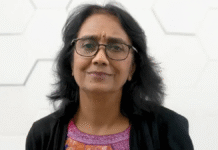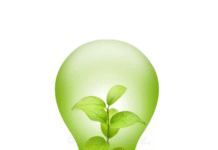AGRICULTURE has historically depended on disruptive discoveries and innovations to make big strides. With the re-discovery of Mendel’s laws, modern plant breeding started to produce new crop varieties with higher potential yield in the twentieth century and hybrid
seed became the major driver of increases in maize yield in the USA.
Indeed, maize yield increased sevenfold between 1940 to 2000 because of hybrid technology and enabled the world to have increased animal feed to meet the growing demands for animal protein, especially in Asia. Hybrid maize may be considered as one of the first disruptive technologies in modern agriculture.
Four innovations brought about change in agriculture in the twentieth century:
• Genetics (Seeds): In the 1960s dwarf wheats rapidly replaced the South Asian subcontinent’s hunger with surplus in the ‘Green Revolution’.
• Mechanisation:Tractors freed up perhaps 25% of extra land to grow human food instead of fodder for draught horses and oxen;
• Fertilisers: Fritz Haber’s 1913 invention of a method of synthesising ammonia transformed agricultural productivity; and
• Pesticides: Chemicals derived from hydrocarbons enabled farmers to grow high-density crops year after year without severe loss to pests and weeds.
In the twentieth century, the effect of these four innovations was to allow more and more food, feed and fibre to be produced from less and less land. These innovations were “disruptive” of the status quo but created immense benefit for farmers and consumers. They fit what Professor Clayton M. Christensen, Harvard Business School in 1997 described
as a “disruptive technology” (DT) – one that displaces an established technology and shakes up the industry or a groundbreaking product that creates a completely
new industry.
Why is technological change so important in agriculture?
Asian agriculture is facing many challenges which lend themselves to technological
responses. Food demand-side challenges are those linked to population growth, urbanisation and demographic change and changing diets. Supply-side challenges are those related to labour (ageing farmers, rural to urban migration), capital (increased uncertainties and reduced access), natural resources (reduced freshwater supplies, reduced arable land, climate change phenomena like severe weather events, droughts and floods) and technology (appropriateness, technology divide).
While political and social solutions are possible to meet some of these challenges, experts generally agree that scale-neutral technologies still offer much potential. This agreement has been borne out of the experiences from the first Green Revolution which saw in the 1960s, many large Asian countries grow modern rice and wheat varieties, and together with modern agricultural inputs, increased yields.
India and China staved off mass starvation. If not for the positive impact of these disruptive innovations, Asia would not have had the food security necessary for economic development.
What are the innovations which will change agriculture in this century?
During the past one hundred years, technological innovations in agriculture expressed themselves en masse in a “First Wave” through Green Revolution technologies of improved seed, fertiliser, pesticides, irrigation and mechanisation,starting in the1950s. A “Second Wave” is discernible when biotech crops were first planted by farmers in 1996. Agriculture is now undergoing a “Third Wave” which is strongly influenced by the so-called 4th Industrial Revolution digital technologies and started having impact in the 2010s.
The term “Agtech” or agricultural technology has come to now represent this milieu of exciting new technologies like drones, sensors and intelligent robots, and is joined by new “Fintech” or financial tools to help farmers access credit and markets. This author has also suggested that a “Fourth wave” has started to produce food (and feed) without agriculture,
basically in laboratories.
The new agtech represents a set of powerful disruptive technologies that have already started to make a difference to small farmers in Asia! These include the following:
• Agronomy and Agricultural Biotechnology to innovate inputs for crop and animal agriculture such as seeds, pest control, seeds with new genetics, microbiome
and animal health;
• Mechanisation, robotics and equipment such as on-farm machinery, automation, drones guided by GPS or GIS systems, environmental sensors, and growing equipment;
• Farm management software, Internet of Things (IoT) systems with sensing and intervening – these include environmental, farming data capture devices, decision support software, big data analytics and miniaturised portable applications;
• Novel farming systems such as indoor farms, plant factories with controlled environment, aquaculture systems, and grow-out facilities for insects, algae and microbes;
• Bioenergy and biomaterials such as on-farm waste processing systems, bio-digesters and biomaterial production for valorisation; and
• Agribusiness marketplaces to allow smallholders to be included in supply chains, such as commodities trading platforms, online input procurement, contracting services.
In countries like China, Philippines and India, smallholder farmers are already accessing digital agtech devices like sensors and drones for managing nutrition and pests in crops like wheat, corn and rice. Many of these are offered through young entrepreneurs to farmers as part of a consulting service to make profits, and represent a form of “Smart Farming” in which up-to-date data on crop and environment are linked through IoT systems to provide timely action, an example of a positive impact from the so-called 4 th Industrial Revolution.
A second DT is through biotechnology, in the form of crop varieties developed using any of a milieu of biotechnology techniques, including genetic modification (GM). Asia in 2018 already grew 11% of the world’s biotech (GM) crops, about 19 Million hectares in 9 countries. The crops are cotton, papaya, canola, maize, eggplant and sugarcane, benefiting millions of smallholders and in some cases, allowing crops to be grown in areas which hitherto had to be abandoned due to insect pest pressure and the ineffectiveness of insecticides. Since its introduction in 1996, a cumulative area of 2.5 billion ha of biotech crops have been grown with an unblemished record of safety.
Going forward, a new biotechnology called gene-editing is likely to have even greater impact. In response to urbanisation, climate change and increased demand by consumers to have vegetables grown close by, a third DT has arisen in the form of “Plant Factories with Artificial Light (or PFALs)” which are essentially enclosed, environment-controlled
greenhouses in which vegetables are grown in tiered trays. These PFALS generally have no need to use insecticides and can produce many times more per unit area using LED lights.
In Asia there were reportedly over 450 PFALs as of 2016 and the number is growing in countries like China, Japan, S. Korea, Taiwan and Singapore. These will increase the 20% of food that the FAO,UN has estimated is produced in urban area.
Two other technologies that have potential in the near future to become DTs are alternative proteins (such as plant-based protein, cellular meat and insect protein), and blockchain technology that safeguards the integrity of food supply from farm to consumer.
Blockchains are also spawning the development of techniques to quickly detect food fraud or guarantee food identity.
Anticipating the future of agriculture and food
Many developing countries are already benefitting from DTs but many more are not even starting to use them – leaving much untapped potential to increase food production and promote entrepreneurship. Some of these technologies yet to mainstream are plant-based protein, cellular meat, insects for food and feed, alternative vegetables, gene-edited genotypes, customised medicinal food with demographic indexing and intelligent
drones and sensors. Countries need to ask themselves to what extent they want to be part of the revolution in technology-enabled food production and processing.
The economist, Jeffrey Sachs, famously stated in 2000 that a third of the world’s population is technologically disconnected, neither innovating at home nor adopting foreign
technologies (A new map of the world: Jeffrey Sachs. The Economist. June 24th 2000). As a continent, Asia cannot afford to be part of this third. Finally, DTs are additionally helping to create a new class of young entrepreneurs, called “Agropreneurs” who are contributing to the re-vitalisation of agriculture. This is the future for Asia.
NOTE: The author is Adjunct Senior Fellow, Centre for Non-Traditional Security Studies, S.
Rajaratnam School of International Studies, Nanyang Technological University Singapore. A condensed version of this article was published in SCIDEV on Sept 18.

















